Check out the following video clip about Sarah, a college professor.
Sarah’s experience in her class, lack of student engagement, is a common issue.
What suggestions can you give her?
Direct instruction vs. indirect instruction
One way for Sarah to engage her students is to use indirect teaching strategies rather than direct instruction.
Direct instruction
Information flows in one direction: from the teacher to the students. The teacher stands in front of a classroom and presents information. Course material is “absorbed” by students.
Indirect instruction
Information flows in two directions and at times, in many directions: from teacher to student, student to teacher, and student to student. The teacher serves as a “facilitator” rather than a lecturer.
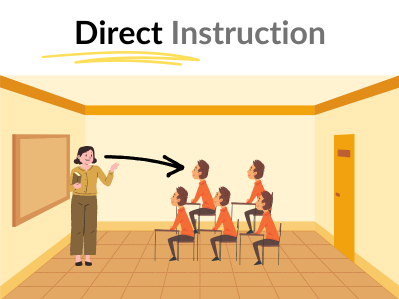
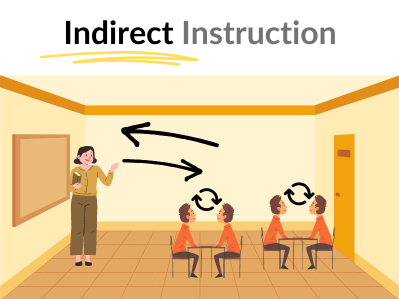
Images created by Adeesha Hack under Creative Commons License CC0
Benefits of indirect instruction
Indirect instruction offers a number of benefits.
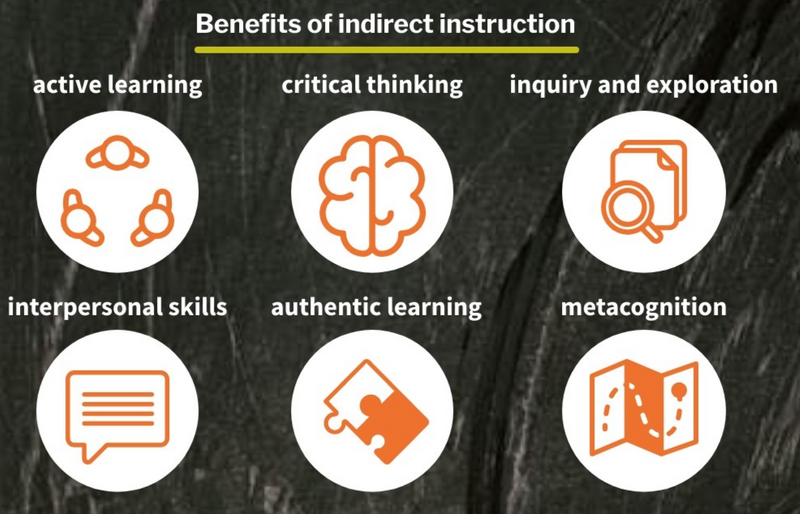 Image created by Adeesha Hack under Creative Commons License CC0
Image created by Adeesha Hack under Creative Commons License CC0
Active learning encourages engagement with course material.
Critical thinking emphasizes analysis, evaluation, and synthesis skills.
Inquiry and exploration provide opportunities to ask and answer relevant questions.
Interpersonal skills foster collaboration and communication.
Authentic learning engages students in authentic and relevant tasks.
Independence encourages self-directed learning.
Indirect instruction can be categorized into several approaches or methods.
Quiz
Which of the following is a key characteristic of indirect instruction?
Approach 1: Inquiry-based learning
Students work on real-world problems, case studies or scenarios, often in groups, to explore and solve complex issues.
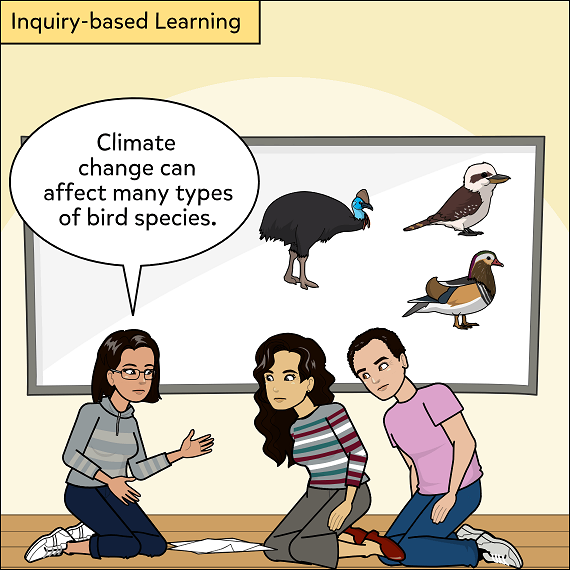 Image created by Adeesha Hack under Creative Commons License CC0
Image created by Adeesha Hack under Creative Commons License CC0
Example: In a biology class, students work in small groups to investigate possible causes for the decline of birds, propose solutions, and develop action plans to address the problem.
Approach 2: Experimental learning
Students are given opportunities to explore concepts through hands-on activities, experiments, or simulations. Teachers provide guidance and support as students are encouraged to make connections and draw conclusions on their own.
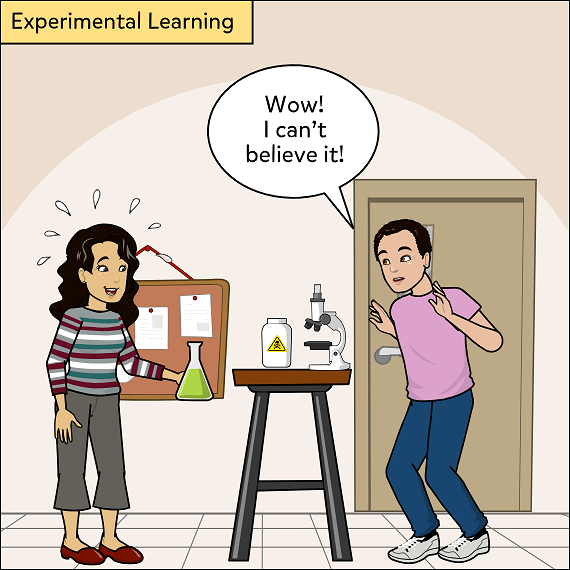 Image created by Adeesha Hack under Creative Commons License CC0
Image created by Adeesha Hack under Creative Commons License CC0
Example: In a chemistry lab, students investigate different substances by conducting experiments and observing the outcomes. They explore how changes in variables such as temperature, concentration, or pressure affect chemical reactions and properties.
Approach 3: Socratic learning
Teachers lead discussions by asking questions that stimulate critical thinking, challenge assumptions, and encourage deeper exploration of concepts. Teachers use a variety of questioning techniques, such as open-ended questions, probing questions, and leading questions, to guide and foster dialogue.
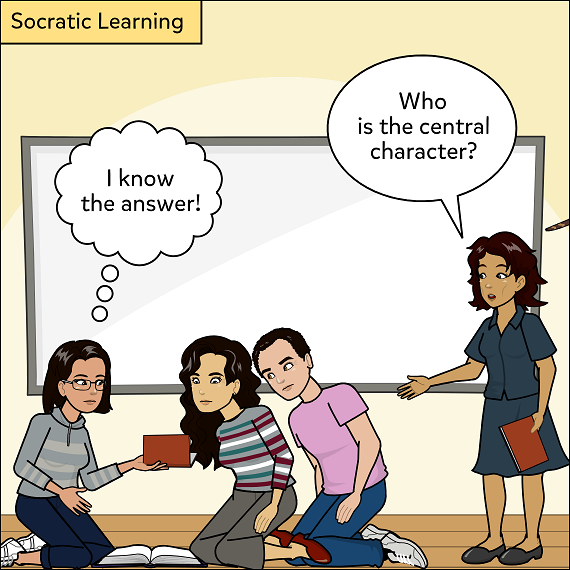 Image created by Adeesha Hack under Creative Commons License CC0
Image created by Adeesha Hack under Creative Commons License CC0
Example: In a literature discussion group, the teacher asks open-ended questions to encourage students to explore themes, characters, and symbolism, fostering critical thinking and deeper understanding.
Approach 4: Cooperative learning
Students work together in groups, often on tasks or projects that require collaboration and communication. Students may take on the role of teachers, explaining concepts or demonstrating skills to their peers. This reinforces their own understanding and promotes active engagement.
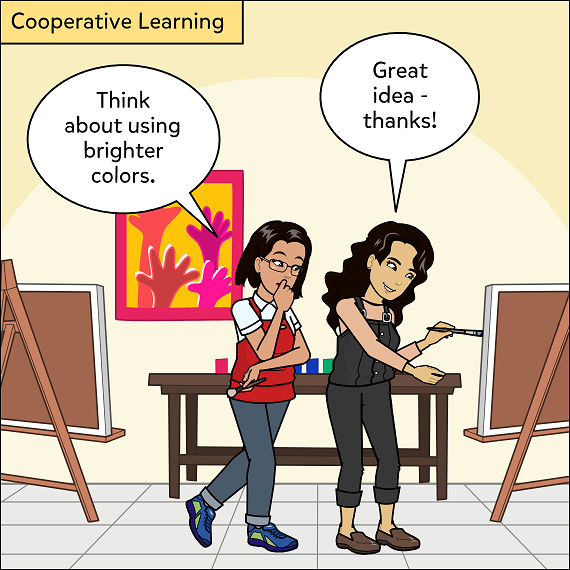 Image created by Adeesha Hack under Creative Commons License CC0
Image created by Adeesha Hack under Creative Commons License CC0
Example: In an art class, students work in pairs or small groups to peer-review each other's paintings. They provide constructive feedback and suggest ideas.
Approach 5: Constructivist learning
Students build new knowledge by connecting it to their existing knowledge. Students may learn from more experienced peers through observation, imitation, and guided practice in authentic tasks.
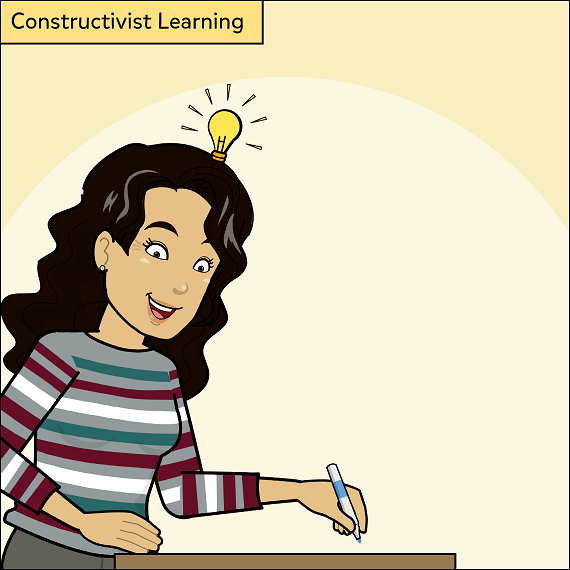 Image created by Adeesha Hack under Creative Commons License CC
Image created by Adeesha Hack under Creative Commons License CC
Example: Creating a neighborhood map in a social studies class. This activity involves active, student-centered learning where students build their understanding of geography, community, and spatial relationships through direct engagement and exploration.
Quiz
Ms. Lee's 7th grade science class is learning about pollution. She decides to use an indirect instruction approach to teach the topic. Which of the following activities would best align with this instructional method?
Take Action

Your feedback matters to us.
This Byte helped me better understand the topic.
